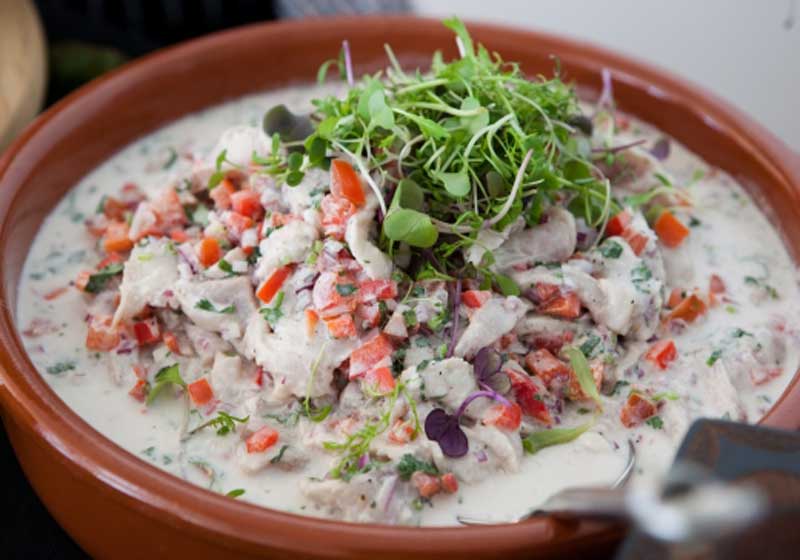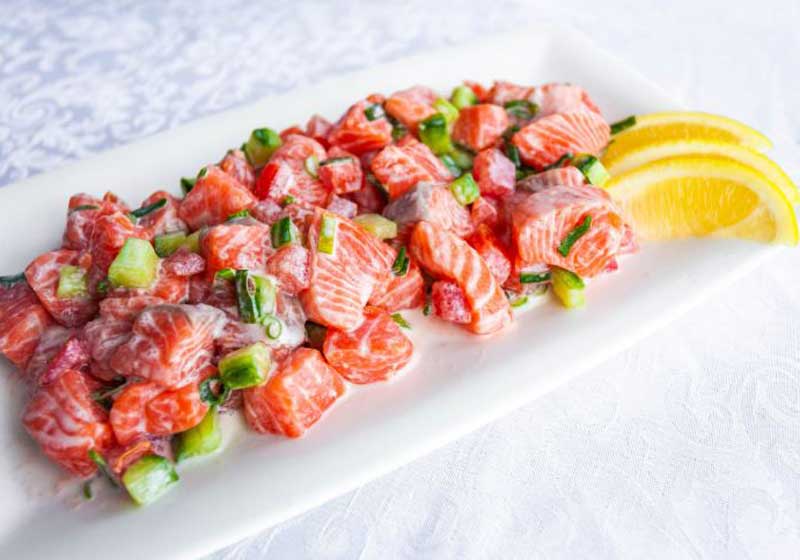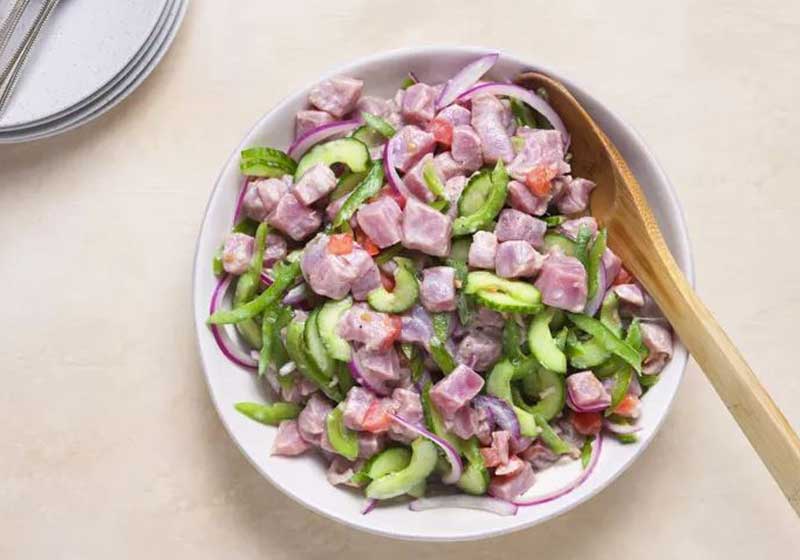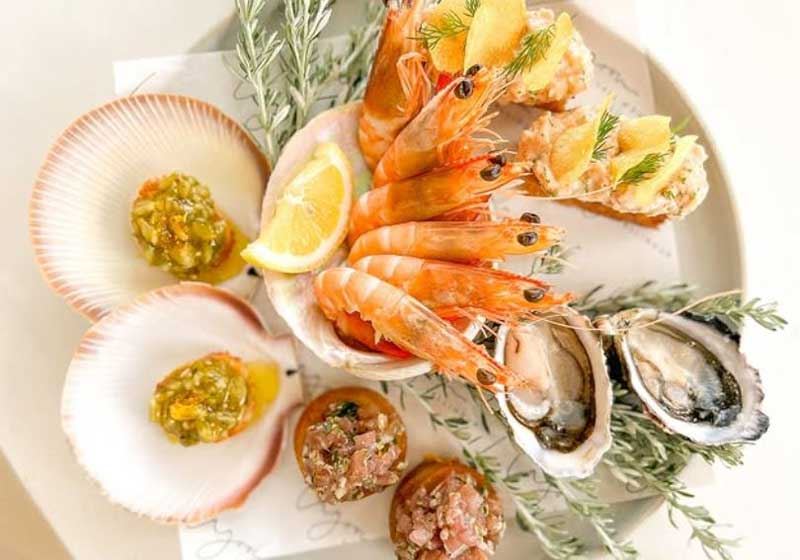By Marie-Antoinette Issa.
In the South Pacific, ceviche takes a distinctly island turn. Known as ota ika in Tahiti and Tonga, ika mata in the Cook Islands, kokoda in Fiji, coconut fish in Nauru, salade Tahitienne or poisson cru in New Caledonia, oka ita in Samoa and ika ota in Wallis and Futuna, this dish is a celebration of the ocean and the tropical landscapes that surround it.
The name itself means raw fish in Polynesian languages, but it hints at far more than just the ingredients. Each bite carries with it the history of fishing villages, sunlit shores and the rhythmic pulse of island life.
At its core, ota ika is simple. Fresh fish is cubed and marinated in citrus juice, most commonly lime or lemon, which gently cooks the flesh without heat. This technique of acid-curing is reminiscent of ceviches found in Latin America, but what sets ota ika apart is the addition of coconut cream and an array of local vegetables and herbs.

Tomatoes, cucumber, onions and chilli add crunch and colour while the coconut lends a silky sweetness that balances the sharp citrus. It is a dish that manages to be vibrant, refreshing and utterly comforting all at once.
The beauty of ota ika lies in its immediacy. Traditionally, the fish is caught in the morning and served the same day. Islanders often prepare it on the sand by the shore combining the catch of the day with freshly squeezed citrus and coconut milk straight from the husk.
This connection between sea and table is at the heart of the dish and it is what makes tasting it in its place of origin so memorable. Eating ota ika is as much about the environment as it is about the flavours. The salt-tinged air, the warmth of the sun and the gentle sound of waves all contribute to the experience.
Culturally, ota ika has been a staple of Polynesian diets for centuries. Fish was abundant and coconut palms lined the islands, providing sustenance in many forms. Marinating raw fish in citrus was a technique introduced through contact with explorers and traders, but the locals adapted it, creating something uniquely their own.

Each island has its own variations. In Tahiti the dish is often brighter with more citrus and a heavier use of coconut cream, while in Samoa, it might include pawpaw or breadfruit for texture and sweetness. The versatility of ota ika speaks to the ingenuity of island cooks and the availability of ingredients that are fresh and abundant.
Modern Chefs across the South Pacific have embraced ota ika and elevated it in ways that honour its heritage while introducing new textures and flavours. Some serve it in hollowed-out coconuts for a dramatic presentation, while others pair it with pickled vegetables or infused oils to add depth.
Yet, the essence remains the same. The balance of acidic citrus, creamy coconut and the natural freshness of the fish is the heart of the dish. It is an ode to the ocean and the culture of the islands, where seafood is not just food but a way of life.
Eating ota ika is also a lesson in restraint and balance. The fish is never overpowered by the other ingredients; each element has a role to play and the interplay between sweet, tart and umami flavours is subtle yet profound.

Photo credit: The Spruce Eats.
Chilli adds a gentle heat that warms without overwhelming, while herbs like coriander or local leaves provide fragrance and freshness. It is a dish that teaches patience both in preparation and in tasting. You have to allow the citrus to gently cure the fish and savour the harmony of flavours that results.
For travellers to the South Pacific, ota ika is an essential culinary experience. It is not just a dish but a window into the life and culture of the islands. It invites you to slow down and appreciate the freshness of ingredients, the skill of preparation and the rhythms of coastal life. It is a dish that nourishes body and spirit and lingers in memory long after the last bite.
In the world of seafood, ota ika stands out not for complexity but for authenticity and cultural resonance. Its elegance comes from simplicity and its magic from its connection to the sea and the people who have perfected it over generations. To taste ota ika is to taste the South Pacific itself - vibrant, sun-drenched and deeply alive.







